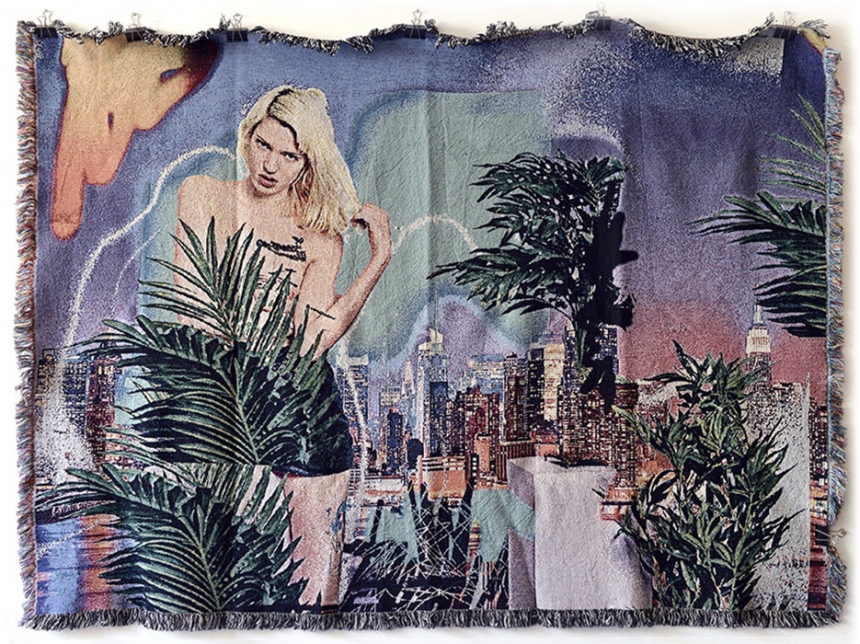The past five years have shown an increased attention to process-based photography. Often-coined “The New Formalism,” this work has received both salivating acclaim and hate-heavy criticism for its test of photographic material, often asking a nearly recycled question: “What is a photograph?” New York-based artist Charlie Rubin’s constantly evolving work unapologetically removes this from the conversation and age-old photography ghetto with thoughtful photo-based images that speak to a more open and inclusive approach of making and looking at art.
Rubin makes colorful, humorous pictures that communicate his observations of the strange details of the world around him. Referring to them as “cultural cues,” these include a range of commonly recognized ephemera, awkward portraits of his friends, beer cans, cars, and landscapes jabbed with swatches of paint – sometimes digital, sometimes physically applied to their surface.
While Rubin first fell in love with the magic of photography in high school as a means of expressing ideas that he “couldn’t portray in painting,” over time he found that thinking about his work in purely photographic terms limited his expressive process. “You take a picture and that’s the end of it.” Rubin told Joerg Colberg in Foam Magazine’s 2013 Talent issue. “You can’t go back and add to the image recorded that very second, like you can with a painting or a sculpture, unless you manipulate it somehow or add another layer to it. This is an obstacle that I felt like I needed to find a way around.” Many of these images were included in his 2014 Conveyor Editions book “Strange Paradise,” which explored his unique attention to the absurd, often pairing manipulated and straight photographs, surprisingly giving a slow and quiet pace to his wink-wink slyness.
In the short time since Strange Paradise, Rubin’s work has evolved in broad strokes to include material ranging from printed-out, painted over spam emails to print-on-demand wall tapestries made with kitschy pop-cultural references. “These are the things that I notice that I'm like ‘wow how does this actually exist?’” Rubin tells us. “…Or ‘this is such a parody of itself’ -- because of our visual culture, everything becomes a reference to something we've seen already in movies, television, or online.”
While seemingly divergent from his previous images, these new works effectively show Rubin’s continued light-hearted snark. “I’m trying to get away from the digital-analog conversation," he writes, "toward the ideas of breaking things down and building them up, visual communication, layered communication in general.” Rubin's delve into other mediums suggest a new way of looking at photo-based art - one that relies less on distinctions of what constitutes a “photograph,” and can function in a broader context of art in general.
Bio: Charlie Rubin was born in 1986 and grew up in the NYC suburb New Rochelle. He received his BA from Haverford College in Pennsylvania and recently earned an MFA from Parsons the New School for Design in New York. His recent book "Strange Paradise" was published in 2014 by Conveyor Editions











